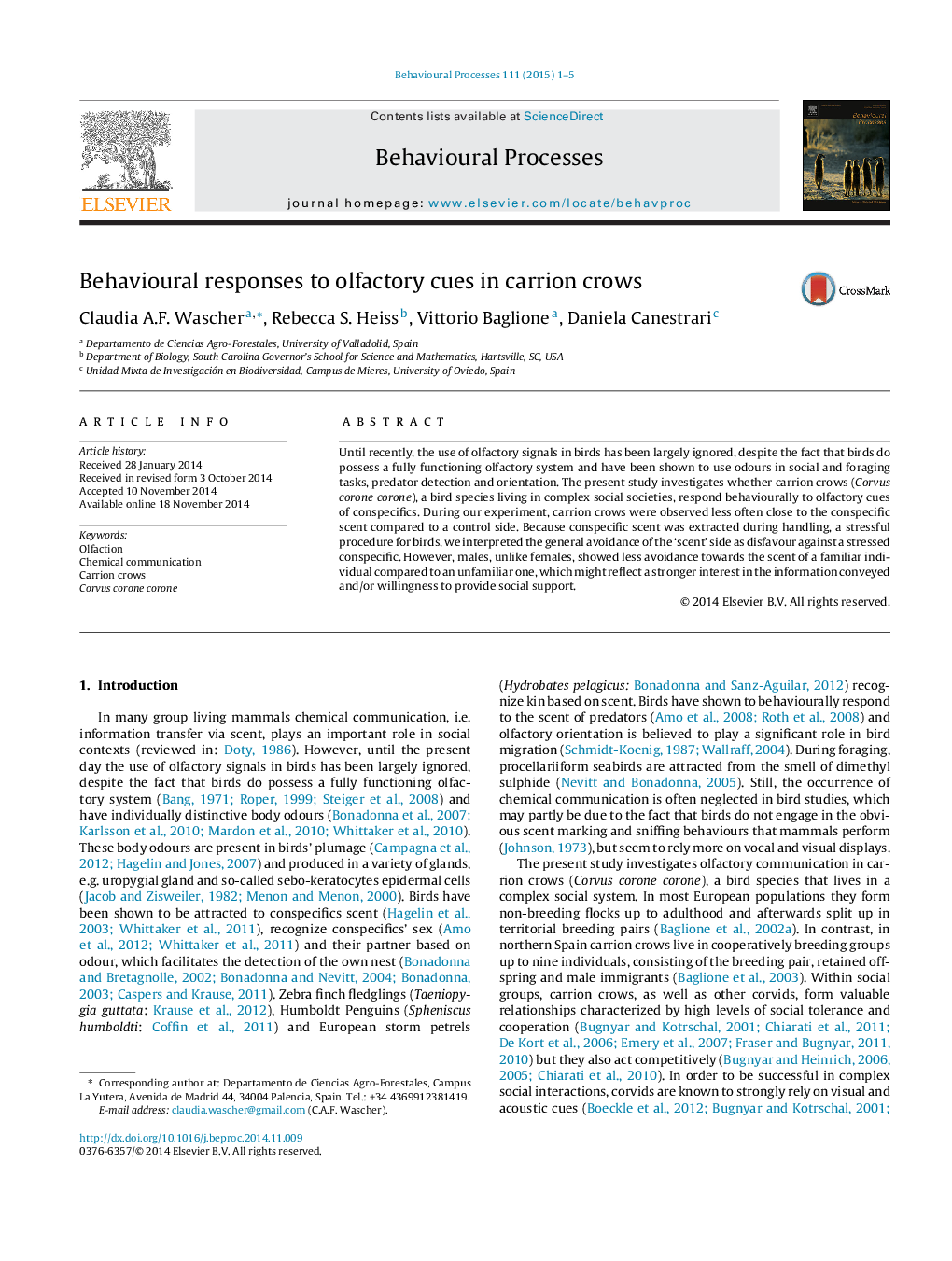| Article ID | Journal | Published Year | Pages | File Type |
|---|---|---|---|---|
| 8497178 | Behavioural Processes | 2015 | 5 Pages |
Abstract
Until recently, the use of olfactory signals in birds has been largely ignored, despite the fact that birds do possess a fully functioning olfactory system and have been shown to use odours in social and foraging tasks, predator detection and orientation. The present study investigates whether carrion crows (Corvus corone corone), a bird species living in complex social societies, respond behaviourally to olfactory cues of conspecifics. During our experiment, carrion crows were observed less often close to the conspecific scent compared to a control side. Because conspecific scent was extracted during handling, a stressful procedure for birds, we interpreted the general avoidance of the 'scent' side as disfavour against a stressed conspecific. However, males, unlike females, showed less avoidance towards the scent of a familiar individual compared to an unfamiliar one, which might reflect a stronger interest in the information conveyed and/or willingness to provide social support.
Related Topics
Life Sciences
Agricultural and Biological Sciences
Animal Science and Zoology
Authors
Claudia A.F. Wascher, Rebecca S. Heiss, Vittorio Baglione, Daniela Canestrari,
